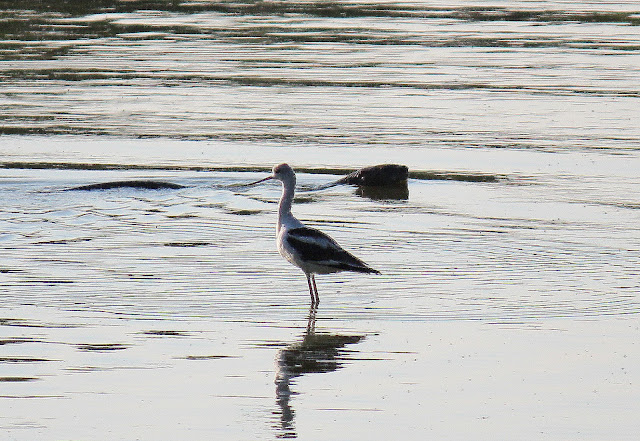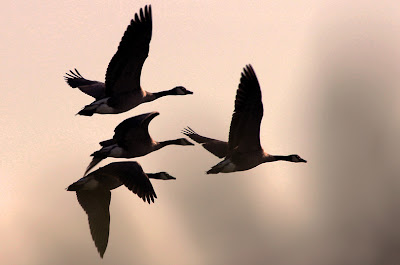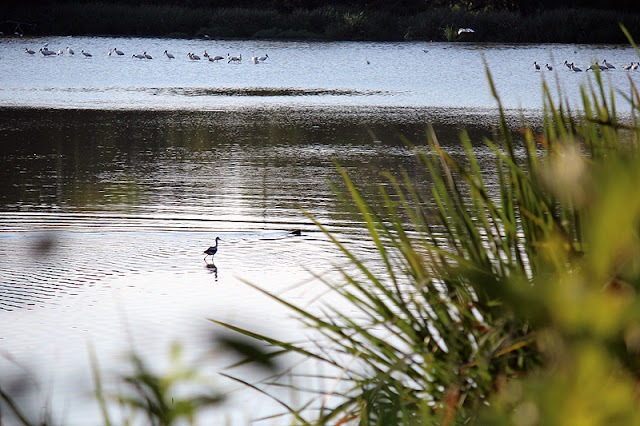In recent decades it has become customary, and right I guess, and easy enough with hindsight, to damn the ancestral frame of mind that ravaged the world so fully and so soon. What I myself seem to damn mainly though, is just not having seen it. Without any virtuous hindsight I would likely have helped in the ravaging as did even most of those who loved it best. But God! To have viewed it entire, the soul and guts of what we had and gone forever now, except in books and such poignant remnants as small swift birds that journey to and from the distant Argentine, and call at night in the sky. John Graves Self-Portrait, With Birds; Some Semi-Ornithological Recollections
Talk of birds in Texas during the first weekend of September usually involves opening day of dove season. A quiet time of year when the dog days of summer are fairly scant for seeing wildlife. The birds of the Great Plains, the Mourning Dove, begin their migration from Nebraska and Kansas into North Texas offering hunters a chance to harvest birds in the fallow corn and sunflower fields that dot the outskirts of the metroplex.
 |
| Roseate Spoonbills and Wood Storks at Little Lemmon Lake, Labor Day Weekend 2012 |
The recurring recipe for attracting these wading birds seems to be shallow drying ponds and lakes that are knee deep on the bird. Find water that deep full of fish and it draws in birds like a magnet. Unique environments to attract birds like this simply do not exist in DFW to any degree. The Corps of Engineers Wetland Project to the north is much too deep and the same with many of the old gravel quarry ponds that dot southeast Dallas County.
Unlike many of the photos I usually take which are hip deep in mud or weeds the photos at Little Lemmon Lake were all taken standing on concrete. Some even standing on top of park benches that dot the lake. Getting to Little Lemmon Lake is a breeze. Located just south of Loop 12, dedicated parking lots exist for both the Loop 12 Boat Ramp and Little Lemmon Lake. The concrete path stretches from Little Lemmon Lake, south to Simpson Stuart Road. The best address I have for Little Lemmon Lake is the 4600 Block of Great Trinity Forest Way(Loop 12). Google Map link 4620 Great Trinity Forest Way.
 |
| Great Trinity Forest Trail Map |
Originally purchased from Jack Apperson in the 1990s, Little Lemmon Lake has served as small recreational lake for decades in private hands. Leased off and on over the years by a local man named Bad Leg Fred, many locals still call the lake by his name. Bad Leg Fred Lake. Many spots named on maps, Google Earth and USGS surveys go by completely different names by the locals who call it home. Bear Hollar, The Post, The Crossing, Juju Heights, Pig Park Rodeo, Possum Bend. I always get a kick out of talking to the old timers on this side of the river because their oral history, what they witness with their own eyes is often completely different than what is printed in books, reports or the newspaper. Were it not for the wildlife, I think the people down here would be just as fascinating to know.
 |
| American Avocet, Tri-colored Heron and Snowy Egret |
Later in the year than previous spottings, new bird species have shown up to share the lake. The overlap of migrations creates an interesting mix of birds from South America, birds from the US Interior/Pacific West Coast and birds migrating down from Canada.
One of the more interesting is the American Avocet. A chicken sized bird with a straw shaped beak that curves upwards. Black/White/Grey in appearance these birds live mostly in the Western United States and out on the Pacific Coast. In late summer, they often disperse further east and are listed as casual vagrants in North Texas.
 |
| Flock of American Avocets and a Great White Egret at Little Lemmon Lake. |
 |
| North American River Otter and American Avocet at Little Lemmon Lake September 1st, 2012 |
The birds actually follow the river otters around in the lake. Stirring up debris from the bottom of the shallow lake, the Avocet above follows at a comfortable distance to sift through the churned up silt.
Other birds take initiative on their own and in an interesting feat, a White Ibis killed a carp on its own then pecked pieces off one by one. The video clip is below.
I thought White Ibis preferred smaller minnow sized fish, crawfish and bugs. Pretty cool to see an Ibis take on a fish that probably outweighed the bird.
I lost count at over 100 Wood Storks in Little Lemmon Lake. The Wood Storks are easy to identify by their brownish heads and necks that almost resemble tree bark. The dozen or more Spoonbills and the countless herons, egrets, ibis and wading shorebirds must put the headcount there at over 500. As is customary for Wood Storks, they feed in organized groups, moving in unison from one end of the lake to the other driving prey in front of them.
Blue Winged Teal Ducks
 |
| Blue Winged Teal Ducks at Little Lemmon Lake |
The first ducks to migrate south in the fall, the Blue Winged Teal often signals that fall is not far behind in North Texas. Smaller than other species of ducks, these birds are often mistaken for juveniles of other species. One of three teal duck species they are only about a foot long and weigh about a pound. The last two years there have been resident fall flocks of these in the furthermost southern wetland cell north of Loop 12 near the old Sleepy Hollow Country Club Parking lot. That particular pond is an older more mature pond leftover from the days when that area was a golf course. I would guess that the food sources are more plentiful there than the newer Wetland Cells closer to the river.
Canadian Geese
 |
| Canadian Geese |
Not in the regular flyway of Canadian Geese who take a more easterly route, the group of four Canadian Geese seen above were in Little Lemmon Lake as I arrived and left shortly thereafter. Last winter two Canadian Geese were in the Wetland Cells north of Loop 12.
 |
| Wetland Cells looking downriver from the Highway 310 Bridge, September 1st |
Lemmon Lake's Last Waterhole
 |
| Lemmon Lake on Labor Day Weekend |
 |
| Gar carcass at Lemmon Lake |
 Lemmon Lake's last waterhole went dry sometime in August. Before that happened I stuck a camcorder in the waterhole to record what transpired during the night. The water, the trapped fish and the newly created mudflats are a big draw for the feral pigs, coyotes and bobcats that live down here. Below is some of the footage condensed down into 5 minutes. Looking through the footage, the coyotes howled all night long, spaced about 30 minutes apart. Almost the perfect length of time to insure zero sleep if you were camping down there. I have been down in this area when it was still light outside, a full hour before sunset and the coyotes will howl, often from places you walked just minutes before.
Lemmon Lake's last waterhole went dry sometime in August. Before that happened I stuck a camcorder in the waterhole to record what transpired during the night. The water, the trapped fish and the newly created mudflats are a big draw for the feral pigs, coyotes and bobcats that live down here. Below is some of the footage condensed down into 5 minutes. Looking through the footage, the coyotes howled all night long, spaced about 30 minutes apart. Almost the perfect length of time to insure zero sleep if you were camping down there. I have been down in this area when it was still light outside, a full hour before sunset and the coyotes will howl, often from places you walked just minutes before.Below is the condensed video of that with notes of the times that certain things took place. At the time of the filming, the waterhole was teeming with gar, carp and even some baitfish.
A dry Lemmon Lake allows easy travel to some usually inaccessible spots on the eastern edge of the lake. Here the river runs down the east side of the dam and the erosion caused by periodic flooding has nearly undermined it in some places. The width of a sidewalk in some places I would guess it will not survive the next few flooding events.
 |
| East side of Lemmon Lake |

Lemmon Lake is bisected by a spit of land running down the length of the lake. During normal lake conditions, the west side of the lake is open water while the east side remains a dense and deep swamp. Seen in the photo above, this is literally the deepest darkest part of the Great Trinity Forest where few people ever venture. The shorter plants here are handlebar high on a mountain bike, 3 1/2 feet. The grass beyond it is 8 feet or higher and a literal wall. To the right beyond the trees is the Trinity River. Currently the dry lakebed is easy to ride across. Without more rain soon, the lakebed will eventually crack making travel across it more difficult.
It's impossible to give a size of scale here looking out over this high sea of grass. Maybe one hundred acres or more of just raw wild swamp. So large that the trees seen in the foreground right are the same size as the trees on the distant horizon.
 |
| aNgRy Skunk at Lemmon Lake |
 The trail through the knee high weeds is easy to follow at the moment. Meandering along the north side of the dam, the trail is probably used mostly by pigs and coyotes. At dawn or dusk the chance to encounter one of these animals along this trail is probably high.
The trail through the knee high weeds is easy to follow at the moment. Meandering along the north side of the dam, the trail is probably used mostly by pigs and coyotes. At dawn or dusk the chance to encounter one of these animals along this trail is probably high.The photo at right is looking from southwest to northeast along the dam. The furthest trees are roughly 1500 feet way and all roughly the same size. Even seeing it for yourself, the distances are hard to grasp since there is no frame of reference.
 The one exception to the trees down here is the tallest cottonwood at the lake. The tallest tree in Dallas, according to the DFW Tree Database. At 120 feet in height, it towers over other trees in the area. It sits at the southeast corner of Lemmon Lake about 100 feet from the Trinity River. It lacks the crown spread and mass to be the largest tree in Dallas but has the height.
The one exception to the trees down here is the tallest cottonwood at the lake. The tallest tree in Dallas, according to the DFW Tree Database. At 120 feet in height, it towers over other trees in the area. It sits at the southeast corner of Lemmon Lake about 100 feet from the Trinity River. It lacks the crown spread and mass to be the largest tree in Dallas but has the height.The tree is so tall that when you get to the base of it, you cannot even hope of seeing the top.
 |
| Spreadsheet noting the height of the cottonwood tree at this location |
 |
| Trunk of the tallest tree in Dallas |
Even taking the photos at Little Lemmon Lake on September 1st, a large amount of gunfire erupted from the west side of the lake on private property currently used as a salvage yard on Carbondale. Up to 100 rounds were fired in my general direction with a couple zipping over my head, many hitting the lake full of birds some of which are listed as Endangered Species. All the birds took off, none looked injured. Despite calling 911 to report the gunfire, no one called back(as they promised to) or came to investigate. Third time I have been shot at down there. Third time I called the police. Third time no one showed. The police down here that I meet in person keep telling me to report things like this because it will get more patrols in the area. Calling things like this in seems to not do much good, it appears. Be careful!


